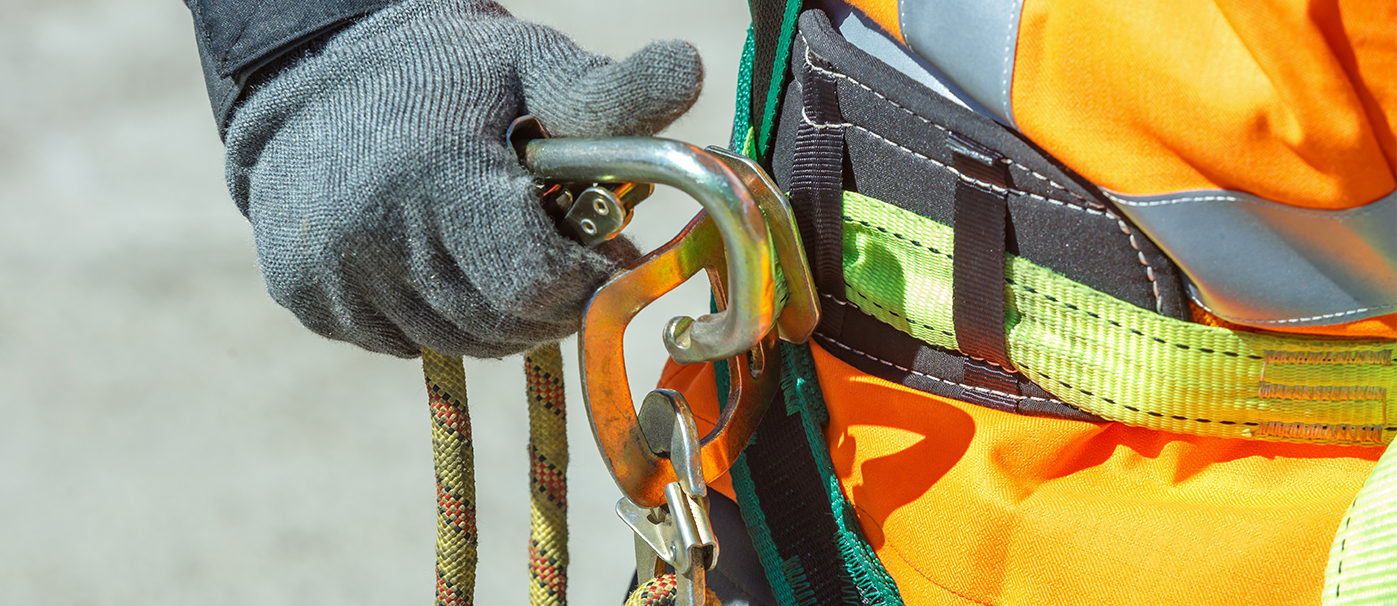Tool in Focus: The Safety Harness
A safety harness does what is says on the box — it keeps you safe when you’re working at heights. But we weren’t always so cautious! Read on for more.
A safety harness is protective kit that sparkies and other tradies wear while working at heights. It is a handy piece of kit, designed to safeguard the wearer from injury or death. Some safety harnesses incorporate a shock-absorbing mechanism, in case you fall far enough to risk a G-force injury when you reach the end of the rope. Reassuring, right? But less than a century ago you’d be expected to crack on with the job regardless of any safety concerns you might have. Scale that 10-storey building? No worries, mate.
A harness-free history
You know *that* pic, don’t you. The one with the workers in New York having lunch on the metal girder. Cigarettes and sarnies aplenty, no safety equipment in sight. Or on-site. It works either way. It’s an iconic image, the pic 69 floors high at the Rockefeller Center, and one which creates a feeling of nausea/anxiety/wonder/vertigo every time you look at it. (And have you ever wondered how the photographer got his shot? It wasn’t with a drone, that’s for sure.) Of course, today it wouldn’t happen; the early 1930s were a rather different time when it comes to OH&S.
“Some safety harnesses incorporate a shock-absorbing mechanism, in case you fall far enough to risk a G-force injury.”
Safety on the Sydney Harbour bridge
Between 1924 and 1932, 1400 workers were employed at any one time, including engineers, riggers and painters. And the folk who needed to get up at height did so without any safety equipment at all.
That wasn’t the only thing that these days would see a construction job called to a halt and the principal engineer marched swiftly to court. Riggers often rode the hook of the crane, hot rivets were thrown and caught without any eye protection, scaffolding was only ever erected for hard-to-get-to places. Tradies simply walked across narrow beams many metres up in the air.
Remarkably, only 16 people lost their lives during the construction of the Sydney Harbour Bridge, but many more sustained injuries.
Inventing the safety harness
Not too long after, there was a general realisation that maybe, just maybe, you should have some form of a safety net if you’re working at heights, and a decade later the first full-body harness was created, based on military parachute harnesses used by paratroopers. It wasn’t until 1976, however, that the first Australian Standard for height safety equipment was developed, and harness-based work is now covered in this country by not one, not two but five safety standards. And let’s be thankful for that. If there’s one thing you don’t want to fail, it’s your safety harness when you’re scaling the heights.
Let’s take a look at some other essential harnesses.
Harness racing
Ah, the trots. Popular here as well as in a number of European countries – particularly France and Russia – as well as the US. Fun fact: Im Themightyquinn — one of the best-known Australasian harness horses — won over $4.5m in his career. Big business.
Harness Pain, The Proclaimers
From their 2007 album Life With You, the Scottish brothers sang, “You need to harness pain, to raise yourself up again, you need to harness pain, and tell the truth about love.” Not as catchy as walking 500 miles, but still.
Lucifer in Harness
If you went to Princeton University in the US during the 70’s, you might be familiar with this tome by Edwin S Fussell. No? Well, it’s all about American meter, metaphor and diction, and discusses the dilemma of American poets who want to express themselves but are too ‘harnessed’ to the English language to do so. Put that one on your Christmas list.





Comments (0)
Write a Comment